If you're struggling with tension headaches, it might be time to explore some unexpected methods for relief. You may find that simple adjustments in your daily routine can greatly impact your comfort. Techniques like deep breathing and mindfulness, along with the use of essential oils, can create a more serene environment. But that's just the beginning; there are other strategies that might surprise you. Curious about how a few gentle stretches or changes in your workspace could help? Let's uncover these intriguing options together.
Practice Deep Breathing Techniques
When tension headaches strike, deep breathing techniques can be a game-changer. These simple exercises help you regain control over your body, reduce stress, and alleviate discomfort. The goal is to increase oxygen flow while calming your mind.
Start by finding a quiet, comfortable space where you can sit or lie down. Close your eyes and take a deep breath through your nose, filling your lungs completely. Count to four as you inhale, letting your abdomen expand. Hold that breath for a moment, then slowly exhale through your mouth for a count of six. As you breathe out, visualize the tension leaving your body. Repeat this cycle for several minutes, focusing solely on your breath.
You can also try the 4-7-8 technique, which helps promote relaxation. Inhale deeply through your nose for four counts, hold your breath for seven counts, and exhale through your mouth for eight counts. This method can help reset your nervous system, making it easier to cope with the stress that often triggers headaches.
As you practice, notice how your body begins to relax. Your shoulders may drop, and your facial muscles might soften. You might even feel a sense of clarity as the tension starts to dissipate.
Incorporate these breathing techniques into your daily routine, especially during stressful moments, and you'll find that they can effectively reduce the frequency and intensity of your tension headaches.
Explore Aromatherapy Options
If you're looking for natural ways to ease tension headaches, aromatherapy can be a game changer.
You can explore essential oils known for their soothing properties, learn effective inhalation techniques, and even try out some calming diffuser blends.
Let's uncover how these options can bring you relief and relaxation.
Essential Oils for Relief
Essential oils can be a powerful ally in alleviating tension headaches, offering a natural approach to relief. You'll find that certain oils can help ease your discomfort and promote relaxation.
Peppermint oil, for instance, is well-known for its cooling effect and ability to stimulate circulation. Just a few drops on your temples can provide a revitalizing sensation that helps reduce headache intensity.
Lavender oil is another excellent option. Its calming properties can help you unwind and alleviate stress, which is often a trigger for tension headaches. You might try adding a few drops to your pillow or using it in a diffuser while you relax.
Another great choice is eucalyptus oil, which can open up your airways and enhance your breathing. This can be particularly helpful if your headache is accompanied by sinus pressure.
For a soothing experience, consider mixing your favorite oils with a carrier oil, like coconut or jojoba, for a gentle massage on your neck and shoulders.
Experiment with these oils to discover what works best for you, and enjoy a more natural way to find headache relief.
Inhalation Techniques Explained
Inhaling essential oils can be a simple yet effective way to harness the benefits of aromatherapy for tension headache relief. You can use various techniques to maximize the soothing effects of essential oils, making it easy to find what works best for you.
One popular method is direct inhalation. Just add a few drops of your chosen essential oil, like lavender or peppermint, to a cotton ball or tissue. Bring it close to your nose and take slow, deep breaths. This method allows you to inhale the oil's aromatic compounds directly, providing immediate relief.
Another option is to create a personal inhaler. You can buy a reusable inhaler kit, add your favorite essential oils, and carry it with you for on-the-go relief. Simply inhale through the nose when you feel a headache coming on.
For a more immersive experience, you can try inhaling while taking a warm shower. Add a few drops of essential oil to the shower floor, and let the steam carry the aroma as it fills the space. This not only helps with headache relief but also promotes relaxation.
Diffuser Blends to Try
Creating your own diffuser blends can elevate your aromatherapy experience and provide targeted relief for tension headaches. By combining essential oils, you can tailor scents to suit your needs and preferences.
Start with a base of lavender oil, known for its calming properties. Add a few drops of peppermint oil; its invigorating scent can help relieve pain and tension. If you want an extra boost, consider including eucalyptus oil, which opens up your airways and promotes relaxation. A good ratio to try is three drops of lavender, two drops of peppermint, and one drop of eucalyptus.
Another blend worth exploring features chamomile, bergamot, and frankincense. Mix three drops of chamomile for its soothing effects, two drops of bergamot for its mood-lifting properties, and one drop of frankincense to enhance relaxation.
Don't hesitate to experiment! Everyone's preferences differ, so adjust the ratios until you find what works best for you.
Remember to diffuse these blends in a well-ventilated area, allowing the aromas to fill your space. With a little creativity, you can create a calming atmosphere that helps ease your tension headaches naturally.
Utilize Acupressure Points
Utilizing acupressure points can be an effective way to alleviate tension headaches. This ancient technique applies pressure to specific points on your body, stimulating energy flow and promoting relaxation. By focusing on these key areas, you can relieve pain and tension without needing medication.
One of the primary acupressure points is located between your eyebrows, in the indentation where your nose meets your forehead. Press gently with your thumb for about 30 seconds, applying firm yet comfortable pressure. This point, known as Yin Tang, is renowned for its calming effects and can help ease tension headaches.
Another effective point is located in the webbing between your thumb and index finger, known as LI4 or Hegu. To find it, pinch the webbing between these two fingers and apply pressure with your opposite thumb for a minute or two. This point can help relieve pain and reduce stress, making it particularly helpful during a headache.
You can also target your neck and shoulders, where tension often builds. Use your fingers to press into the trapezius muscle, which runs from your neck to your shoulders. Spend a few moments kneading this area to release tightness and improve circulation.
Remember to breathe deeply while applying pressure, as this can enhance relaxation. By incorporating acupressure into your routine, you can proactively manage tension headaches and enjoy moments of relief whenever the discomfort arises.
Incorporate Gentle Stretching
Incorporating gentle stretching into your routine can greatly reduce the tension that contributes to headaches. Stretching helps release tight muscles in your neck, shoulders, and upper back, which are often areas of tension that lead to discomfort. By taking just a few minutes each day to focus on these areas, you can enhance your well-being and prevent headaches.
Start with simple neck stretches. Slowly tilt your head to one side, bringing your ear toward your shoulder. Hold this position for about 15-30 seconds, feeling the stretch along the opposite side of your neck. Switch sides and repeat.
Next, try shoulder rolls. Raise your shoulders toward your ears, then roll them back and down. Do this for about 10 repetitions to loosen up any tightness.
Incorporating upper back stretches can also be beneficial. Stand or sit up straight, interlace your fingers, and stretch your arms out in front of you, rounding your upper back. Hold this position for 15-30 seconds while breathing deeply.
Don't forget about your chest! Stand in a doorway, place your hands on either side, and gently lean forward to feel a stretch across your chest. This counteracts the hunching posture that often contributes to tension headaches.
Make stretching a regular part of your day, and you'll likely notice a decrease in headache frequency. Your body will thank you, and you'll enjoy a greater sense of relaxation and relief.
Change Your Diet
Your diet plays an essential role in managing tension headaches. What you eat can either trigger or alleviate the pain, so taking a closer look at your daily meals is crucial. Start by identifying potential food triggers. Common culprits include aged cheeses, processed meats, and foods containing MSG. Keeping a food diary can help you pinpoint which items might be causing your headaches.
Incorporate more whole foods into your diet. Fruits, vegetables, whole grains, and lean proteins not only nourish your body but also keep your blood sugar stable, which can reduce the likelihood of tension headaches. Hydration is another key factor; make sure you're drinking enough water throughout the day. Dehydration can lead to headaches, so aim for at least eight glasses daily.
Don't forget about the importance of regular meal timing. Skipping meals can spike your stress levels and contribute to headaches, so try to eat balanced meals at consistent times. Consider adding magnesium-rich foods like spinach, nuts, and legumes, as magnesium can help relax blood vessels and may reduce headache frequency.
Lastly, be cautious with caffeine. While a small amount can sometimes help relieve headaches, too much can lead to withdrawal headaches or even trigger them. Pay attention to how your body responds to different foods and beverages, and adjust your diet accordingly.
Try Heat or Cold Therapy
Relief from tension headaches can often be found through the simple yet effective methods of heat or cold therapy. Both options can help soothe the discomfort, but you'll want to choose the one that feels right for you in the moment.
If you opt for heat therapy, try using a warm compress or heating pad on your neck and shoulders. The gentle warmth helps to relax tight muscles, increasing blood flow and alleviating pain. A warm shower can also provide relief, as the heat envelops your body and eases tension.
Just be careful not to overheat, as too much heat can sometimes worsen inflammation.
On the other hand, if you prefer cold therapy, grab an ice pack or a bag of frozen peas wrapped in a cloth. Apply it to your forehead or the back of your neck for 15-20 minutes. The cold can numb the pain and reduce inflammation, providing a rejuvenating contrast to the heat.
If you're dealing with a migraine that often accompanies tension headaches, cold therapy might be particularly beneficial.
Experiment with both heat and cold to see which one works best for you. You might find that alternating between the two offers the most relief.
Engage in Mindfulness Meditation
Mindfulness meditation can be a powerful tool for easing tension headaches.
By practicing simple techniques, you can cultivate a sense of calm and reduce stress in your daily life.
Let's explore the benefits of mindfulness and how to seamlessly incorporate it into your routine.
Benefits of Mindfulness Practice
Engaging in mindfulness meditation offers a powerful tool for alleviating tension headaches. This practice encourages you to focus on the present moment, helping to reduce stress and anxiety, which are often triggers for headaches. By setting aside just a few minutes each day, you can create a mental space that promotes relaxation and clarity.
Mindfulness meditation enhances your awareness of bodily sensations. As you tune into how your body feels, you may notice tension building up, allowing you to address it before it escalates into a headache. This heightened awareness can foster a sense of control over your physical and emotional responses.
Additionally, practicing mindfulness can improve your overall resilience to stress. As you cultivate a more positive mindset through meditation, you're likely to handle everyday challenges with greater ease, reducing the likelihood of tension-related headaches.
Moreover, mindfulness can improve sleep quality, which is essential for headache prevention. When you sleep better, your body has a better chance to recover and manage stress effectively.
Simple Meditation Techniques
There are several simple meditation techniques you can use to enhance your mindfulness practice and alleviate tension headaches. One effective method is focused breathing.
Find a quiet space, sit comfortably, and close your eyes. Take a deep breath in through your nose, allowing your abdomen to expand. Hold for a moment, then exhale slowly through your mouth. Repeat this process for several minutes, concentrating solely on your breath.
Another technique is body scanning. Lie down or sit in a comfortable position. Start from the tips of your toes and gradually move your attention up your body, noticing any tension or discomfort.
As you focus on each area, imagine breathing into it and releasing any tightness.
You can also try guided imagery. Picture a serene landscape, like a beach or forest. As you visualize this place, engage your senses—feel the warmth of the sun, hear the waves, or smell the pine trees.
Incorporating Mindfulness Daily
Many people find that incorporating mindfulness meditation into their daily routine can greatly reduce stress and tension. By setting aside just a few minutes each day, you can cultivate a sense of calm that helps alleviate tension headaches.
Start by finding a quiet space where you can sit comfortably, close your eyes, and focus on your breath. Inhale deeply through your nose, allowing your abdomen to expand, then exhale slowly through your mouth.
As thoughts arise, acknowledge them without judgment and gently return your focus to your breath. You can also explore guided meditation apps or videos that can provide structure and support as you begin this practice. Aim for at least five to ten minutes each day, gradually increasing the duration as you become more comfortable.
Over time, you'll notice that this small commitment pays off by enhancing your emotional resilience and reducing the frequency of headaches. Remember, consistency is key. Make mindfulness meditation a non-negotiable part of your day, whether it's in the morning, during lunch, or before bed.
You'll find that even a brief pause for mindfulness can transform your day and help keep tension headaches at bay.
Optimize Your Workstation Setup
A well-optimized workstation can greatly reduce the frequency of tension headaches. Start by ensuring your chair supports your lower back, allowing your feet to rest flat on the floor. Adjust the height so your knees are at a 90-degree angle and your thighs parallel to the ground. This position helps maintain good posture and reduces strain on your neck and back.
Next, position your computer monitor at eye level, about an arm's length away. This setup prevents you from leaning forward or looking down, which can strain your neck and lead to headaches. If you're using a laptop, consider investing in a separate keyboard and mouse to achieve a more ergonomic arrangement.
Lighting plays a significant role too. Keep your workspace well-lit but avoid glare on your screen. Natural light is best, but if that's not an option, use a desk lamp that provides adequate illumination without causing eye strain.
Don't forget to take regular breaks. Set a timer to remind yourself to stretch or walk around every hour. These mini-breaks not only refresh your mind but also relieve muscle tension.
Lastly, declutter your workspace. A clean, organized environment can reduce stress and help you focus better.
Conclusion
By incorporating these simple techniques into your daily routine, you can greatly alleviate tension headaches. Practicing deep breathing, exploring aromatherapy, and utilizing acupressure can provide immediate relief. Don't forget to stretch gently and pay attention to your diet and hydration. Applying heat or cold can soothe discomfort, while mindfulness meditation helps reduce stress. Finally, optimizing your workstation setup can prevent triggers. Embrace these strategies for a healthier, headache-free life!



